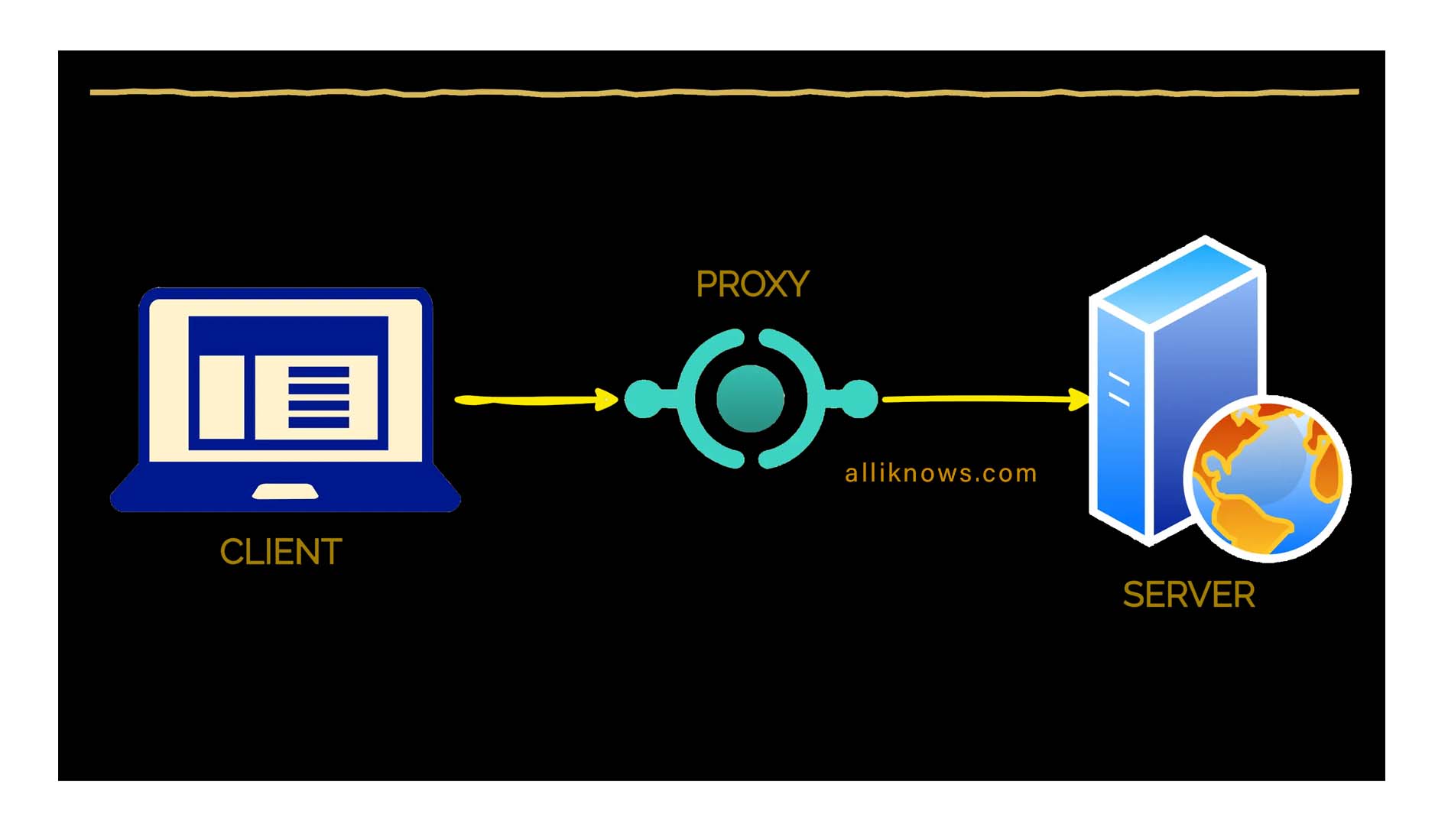In the world of web development, creating efficient and secure APIs is a crucial aspect of building modern applications. Node.js, with its versatility and speed, has become a popular choice for developers when it comes to building APIs. One powerful tool in a Node.js developer’s toolkit is http-proxy-middleware, which allows you to create a flexible and dynamic API proxy. In this comprehensive guide, we will walk you through the process of how to build Node.js API proxy using http-proxy-middleware, empowering you to manage and route requests effectively.
Table of Contents
- Introduction
- What is
http-proxy-middleware? - Why is it essential for web development?
- What is
- Getting Started
- Setting up a Node.js project
- Initializing your project
- Installing
http-proxy-middleware
- Creating Your Node.js Server
- Setting up an Express.js application
- Defining a proxy route with
http-proxy-middleware
- Advanced Configuration
- Customizing headers and request bodies
- Implementing custom middleware logic
- Enhancing security through filtering
- Use Cases
- Routing requests for load balancing
- Aggregating multiple APIs into a single endpoint
- Managing API versioning and backward compatibility
- Conclusion
- The power of
http-proxy-middlewarein web development - Exploring the possibilities for your Node.js applications
- The power of
- FAQs: Building a Node.js API Proxy with
http-proxy-middleware- Frequently asked questions related to this topic
- Additional Resources
- Where to find more information and documentation
What is http-proxy-middleware ?
http-proxy-middleware is a Node.js middleware that enables you to proxy requests to different endpoints or services based on specified rules. It acts as a middleware layer between your client and the target server, intercepting requests and forwarding them accordingly.
Why we need to use http-proxy-middleware in Node.js development ?
This powerful library is particularly useful when you need to:
1. Routing Requests
In many web applications, especially those with complex architectures, there’s a need to route incoming requests to different services or endpoints. This routing is essential for load balancing, version control, and managing different parts of an application. http-proxy-middleware simplifies this process by providing a convenient way to define routing rules.
2. Load Balancing
Modern web applications often handle a high volume of traffic. To ensure that no single server gets overwhelmed, requests need to be evenly distributed among multiple servers. http-proxy-middleware allows you to implement load balancing effortlessly, improving the overall reliability and performance of your application.
3. API Aggregation
Many applications rely on data from various external APIs. These APIs may have different endpoints and structures. http-proxy-middleware enables you to aggregate data from multiple sources into a single endpoint, simplifying your application’s data-fetching logic.
4. API Versioning
As your application evolves, you may need to introduce changes to your APIs. However, maintaining backward compatibility for existing clients is crucial. http-proxy-middleware helps you manage API versioning smoothly by routing requests to the appropriate versions based on defined rules.
5. Security
http-proxy-middleware can also play a role in enhancing the security of your application. By acting as an intermediary layer between the client and the target server, it can help filter and sanitize incoming requests, adding an extra layer of protection against malicious traffic.
6. Custom Middleware
Besides routing, http-proxy-middleware allows you to implement custom middleware logic. This means you can modify request headers, manipulate request bodies, or implement custom authentication mechanisms before forwarding requests to the target server.
Building Node.js API Proxy Using http-proxy-middleware:
To build a Node.js API proxy using http-proxy-middleware, follow these steps:
Step 1: Create a Node.js Project
First, ensure you have Node.js installed on your system. If not, download and install it from the official website. Once Node.js is installed, open your terminal and create a new directory for your project:
mkdir api-proxy cd api-proxyStep 2: Initialize Your Project
Inside your project directory, run the following command to initialize a new Node.js project:
npm init -yThis command creates a package.json file that will track your project’s dependencies.
Step3: Install Express.js
To install Express.js, use the npm install command. You can install the latest version of Express.js by running:
npm install express --saveStep 4: Install http-proxy-middleware
Now, install http-proxy-middleware as a dependency for your project:
npm install http-proxy-middleware --saveThis command will add http-proxy-middleware to your package.json file.
Step 5: Create Your Node.js Server:
Create a JavaScript file (e.g., server.js) in your project directory. This file will serve as the entry point for your Node.js server. Here’s a basic example of setting up a server and using http-proxy-middleware to proxy requests:
const express = require('express');
const { createProxyMiddleware } = require('http-proxy-middleware');
const app = express();
// Define your proxy route
const apiProxy = createProxyMiddleware('/api', { target: 'http://example.com' });
// Use the proxy middleware for the defined route
app.use('/api', apiProxy);
// Start the server
const port = 3000;
app.listen(port, () => {
console.log(`Server is running on port ${port}`);
});This code is setting up a Node.js server using the Express.js framework and configuring it to act as a proxy server for requests made to a specific route (/api). Here’s a breakdown of what each part of the code does:
- Importing Dependencies at the top ” express and http-proxy-middleware “
- Creating an Express Application:
const app = express();: Initializes an Express application, which is used to define routes and handle HTTP requests.
- Defining a Proxy Route:
apiProxyConfigures a proxy middleware usingcreateProxyMiddleware. It specifies that any incoming request to the/apiroute should be proxied tohttp://example.com. In other words, requests to/apiwill be forwarded to the target URL (http://example.com).
- Using the Proxy Middleware:
app.use('/api', apiProxy);: Associates theapiProxymiddleware with the/apiroute in the Express application. This means that any request to/apiwill pass through the proxy middleware, which will then forward the request tohttp://example.com.
- Starting the Server:
const port = 3000;: Specifies that the server should listen on port 3000.app.listen(port, () => { ... });: Starts the Express server on port 3000 and logs a message to the console when the server starts.
In summary, this code sets up a Node.js server using Express.js, and when a request is made to the /api route on this server, it acts as a reverse proxy, forwarding the request to http://example.com. The server will listen on port 3000 for incoming requests.
So, if you were to run this code with starting your server as shown below heading and send a request to http://localhost:3000/api by pasting it in your browsers URL, it would be proxied to http://example.com, and the response from http://example.com would be returned to the client making the request.
Step 6: Start Your Server
To start your Node.js server, run the following command:
node server.jsYour server will be up and running, ready to proxy requests to the specified endpoint.
Advanced Configuration
While the basic setup allows you to proxy requests, http-proxy-middleware offers extensive configuration options. You can customize headers, modify request bodies, and even implement custom logic before forwarding requests. Refer to the official documentation for more advanced use cases.
Use Cases
1. Routing Requests for Load Balancing
- Scenario: When your web application experiences high traffic or needs to distribute requests among multiple servers for improved performance and reliability.
- Solution: http-proxy-middleware allows you to distribute incoming requests evenly among multiple server instances, implementing effective load balancing.
2. Aggregating Multiple APIs into a Single Endpoint
- Scenario: Your application relies on data from various external APIs with different endpoints and structures.
- Solution: With http-proxy-middleware, you can consolidate data from multiple APIs into a single endpoint, simplifying your application’s data-fetching logic and reducing client-side complexity.
3. Managing API Versioning and Backward Compatibility
- Scenario: Your application evolves, introducing changes to your APIs, but you need to maintain backward compatibility for existing clients.
- Solution: http-proxy-middleware allows you to manage API versioning seamlessly, ensuring that requests are routed to the appropriate versions based on defined rules.
Conclusion
Building a Node.js API proxy using http-proxy-middleware is a powerful way to manage and route requests in your web application. Whether you need to aggregate multiple APIs, implement load balancing, or handle API versioning, this middleware provides the flexibility and control you need.
Now that you have a solid foundation, explore the possibilities and unleash the full potential of your Node.js applications with http-proxy-middleware. Happy coding!
FAQs: Building a Node.js API Proxy with http-proxy-middleware
1. What is http-proxy-middleware, and why is it used?
http-proxy-middlewareis a Node.js middleware that allows developers to proxy HTTP requests to different endpoints or services based on specified rules. It’s used to efficiently manage and route requests in web applications, enabling tasks like load balancing, API aggregation, and versioning.
2. What are the benefits of using http-proxy-middleware?
- The benefits include simplified routing of requests, load balancing for improved performance, API aggregation for consolidating data from multiple sources, API versioning for maintaining backward compatibility, and enhanced security through request filtering.
3. How do I install http-proxy-middleware in my Node.js project?
- You can install
http-proxy-middlewareas a dependency using npm or yarn. Runnpm install http-proxy-middleware --saveoryarn add http-proxy-middlewarein your project’s root directory.
4. What is the purpose of the target option when configuring a proxy route?
- The
targetoption specifies the destination URL to which incoming requests will be forwarded. It determines where the proxy middleware will route requests. In the code provided, requests to/apiare forwarded tohttp://example.com.
5. Can I proxy requests to multiple endpoints with different rules using http-proxy-middleware?
- Yes, you can define multiple proxy middlewares with different rules, each forwarding requests to different target URLs. This allows you to proxy requests to multiple endpoints with distinct configurations.
6. How can I add custom middleware logic to the proxy process?
http-proxy-middlewaresupports custom middleware functions that can be added to the proxy middleware chain. These functions can modify request headers, manipulate request bodies, or perform other actions before forwarding requests to the target server.
7. Is http-proxy-middleware suitable for handling large-scale applications?
- Yes,
http-proxy-middlewareis suitable for both small-scale and large-scale applications. Its flexibility and configuration options make it adaptable to various scenarios, including those with high traffic and complex routing needs.
8. Where can I find more advanced configuration options and documentation for http-proxy-middleware?
- You can refer to the official documentation of
http-proxy-middlewareon GitHub for advanced configuration options, examples, and detailed usage instructions.
9. Is http-proxy-middleware limited to use with Express.js?
- No, while the example provided uses Express.js,
http-proxy-middlewareis not limited to Express and can be used with other Node.js frameworks as well.
10. Can I use http-proxy-middleware to proxy WebSocket connections?
- Yes,
http-proxy-middlewarecan be configured to proxy WebSocket connections, making it versatile for handling real-time communication in addition to HTTP requests.
Additional Resources
1. Official Documentation
2. Node JS Frameworks:
- Link: Best Node.js Frameworks
3. Express.js Documentation
4. Load Balancing Strategies
- Link: Load Balancing Algorithms Explained
- Description: Understanding load balancing algorithms is crucial for optimizing the distribution of incoming requests. This resource explains various load balancing strategies and their implications.

